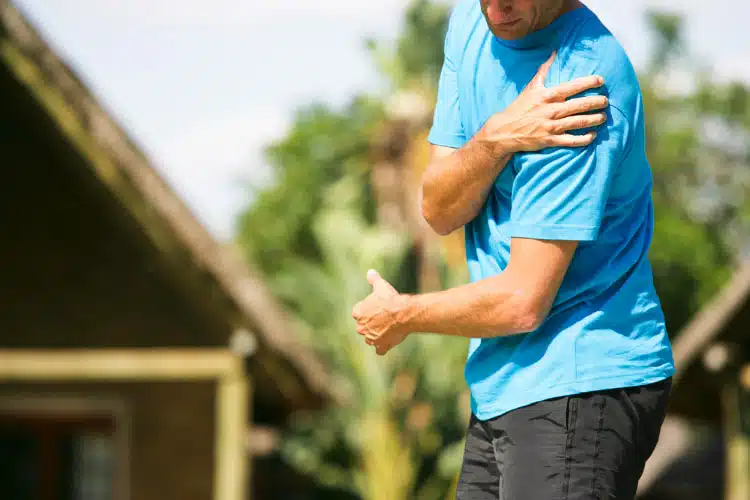The elbow plays a crucial role in our everyday activities. Often, these involve repetitive movements, making the elbow vulnerable to overuse injuries such as golfer’s elbow. Medically known as medial epicondylitis, golfer’s elbow is the inflammation of the tendons (tendonitis) connecting the elbow and the forearm, causing pain. This is more with flexion of the wrist and/or making a fist.
If you are experiencing elbow pain and numbness, read this blog to understand golfer’s elbow, its causes and symptoms, and some natural treatment options.
Golfer’s elbow is a condition that causes pain on the inside of the elbow, extending down the wrist. It is often mistaken for tennis elbow. Tennis elbow affects the outer edge (lateral side) of the arms when held at the sides with the palms facing forward. Thus, the pain occurs outside the elbow. On the other hand, golfer’s elbow affects the inner edge (medial side).
Playing golf or other sports is not the only cause of golfer’s elbow. It can develop if you perform repetitive motions, such as hammering, lifting, and even typing, creating tears in the tendons.

Its symptoms include the following:
A healthcare professional will ask what activities trigger your elbow pain. Then, they will perform a physical exam, during which they may apply pressure to the affected area and ask you to move your elbow and arms. Imaging tests such as MRI, CT scans, and bone scans can confirm the diagnosis but aren’t necessarily needed.
Chiropractic care for golfer’s elbow can effectively address the inflammation of the tendons. Chiropractors manipulate the elbow, the forearm, and the wrist, realigning the joints and relieving pressure on the tendons. These adjustments help decrease inflammation and promote healing.
In addition to manipulation, chiropractors may recommend stretching and strengthening exercises as part of the rehabilitation process. According to a study published in the British Journal of Sports Medicine, as chiropractic adjustments alleviate pain, they create the conditions necessary for engaging in more vigorous exercises. This comprehensive approach leads to a more effective and faster recovery.
Dry needling involves inserting fine needles into trigger points in the muscles to relieve tension and pain. This therapy helps reduce inflammation and improves blood flow to the affected area, healing golfer’s elbow.

Myofascial techniques focus on releasing tightness and restrictions in the connective tissues surrounding the muscles. The gentle pressure and stretching reduce pain and enhance mobility in the elbow.
IASTM uses specialized tools to break down scar tissue and fascial restrictions. This technique stimulates the body’s healing response, improving tendon function and reducing discomfort.
Stretching and strengthening exercises restore the flexibility and stability of the muscles around the elbows, which helps reduce pain and prevent future injuries. Rehabilitation involves both concentric exercises, which tighten the muscles, and eccentric exercises, which relax the muscles. In conjunction with the elbow, looking after the shoulder to improve strength will also assist in golfer’s elbow pain.
Regular chiropractic adjustments help restore proper joint movement and increase the elbow’s range of motion, thus preventing golfer’s elbow.
Outside the clinic, you can follow these practical tips to prevent golfer’s elbow.

For Players
For Professionals
Golfer’s elbow is a restricting condition that affects everyday activities and sports performance. If you are experiencing symptoms, effective management is essential for maintaining your health and enjoying your favorite activities without discomfort or limitation.
Say goodbye to discomfort and take the first step toward feeling your best with personalized care and comprehensive treatment plans at Stumpff Chiropractic. Dr. Eric Stumpff uses various manual therapies, including chiropractic adjustments, to provide natural elbow pain relief and enhanced mobility.
Call (954) 368-4054 to schedule an appointment.
